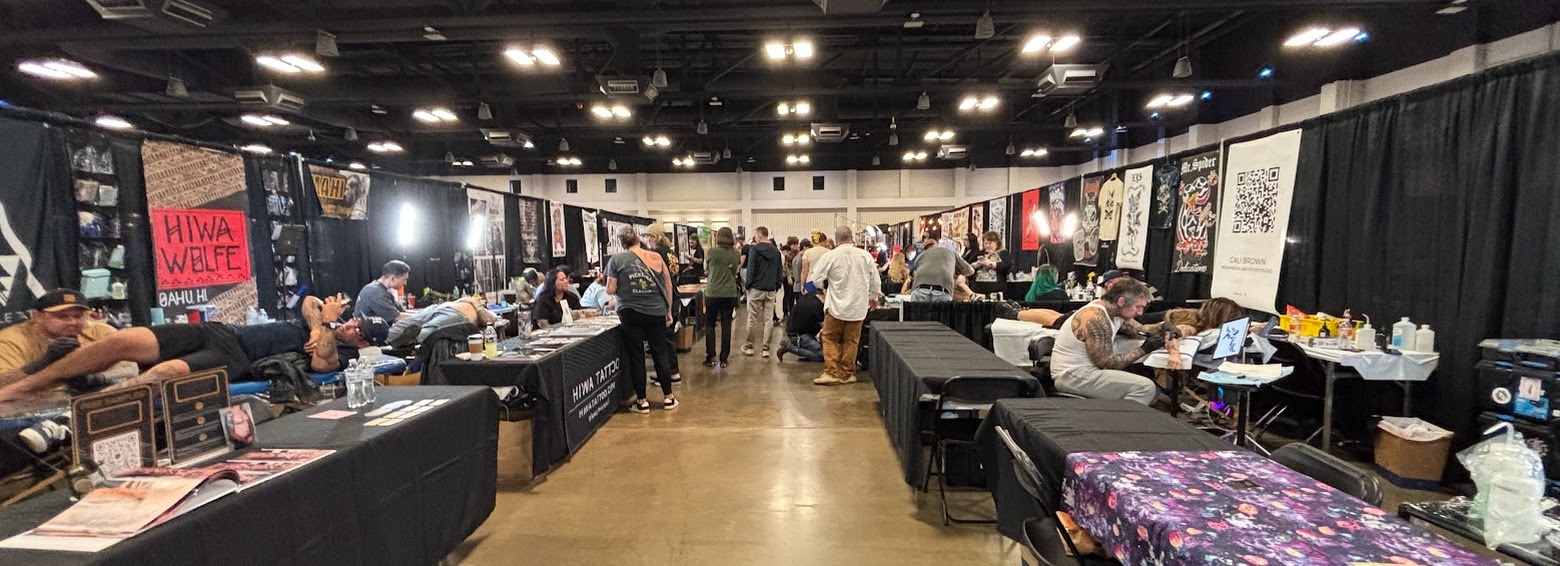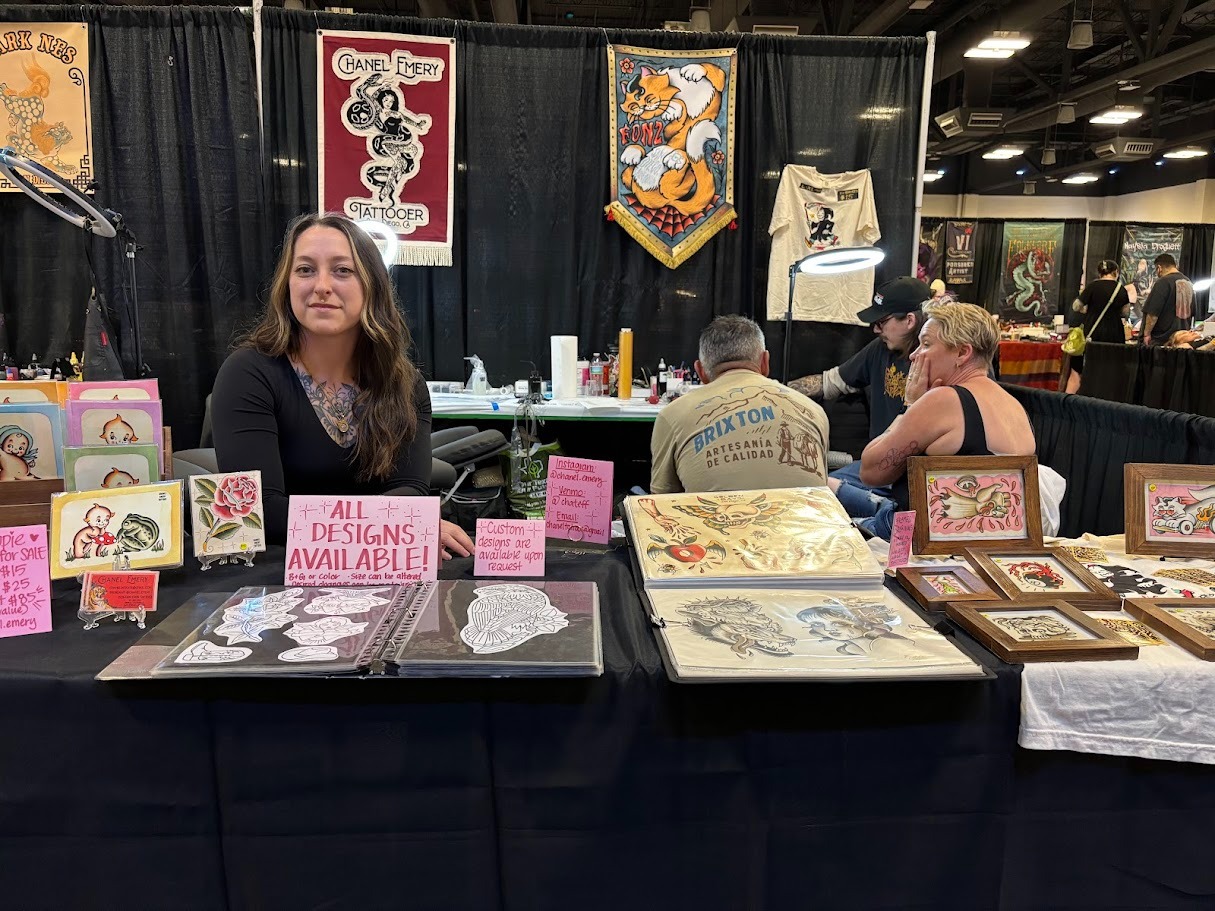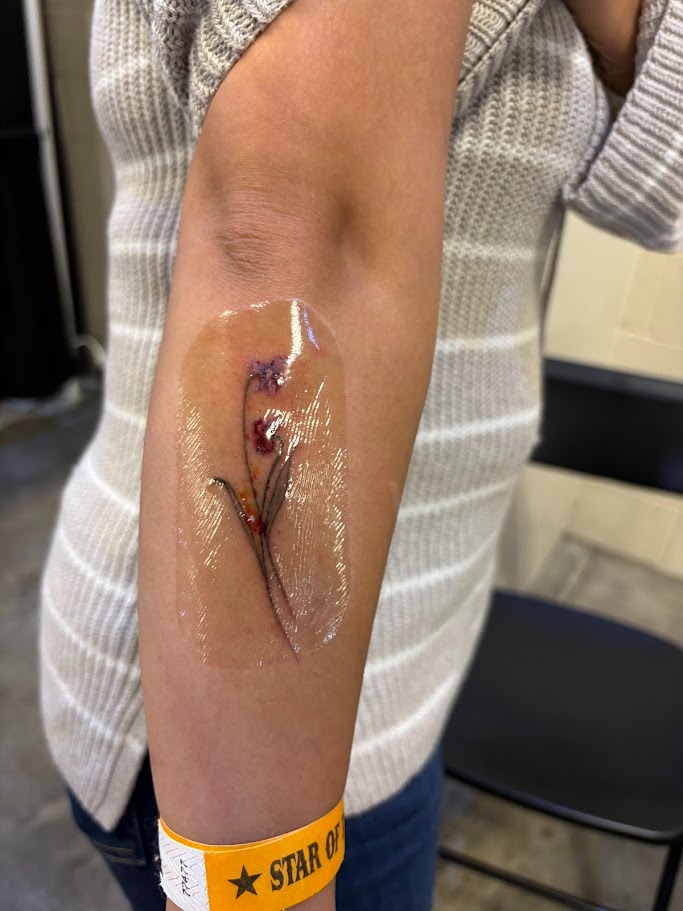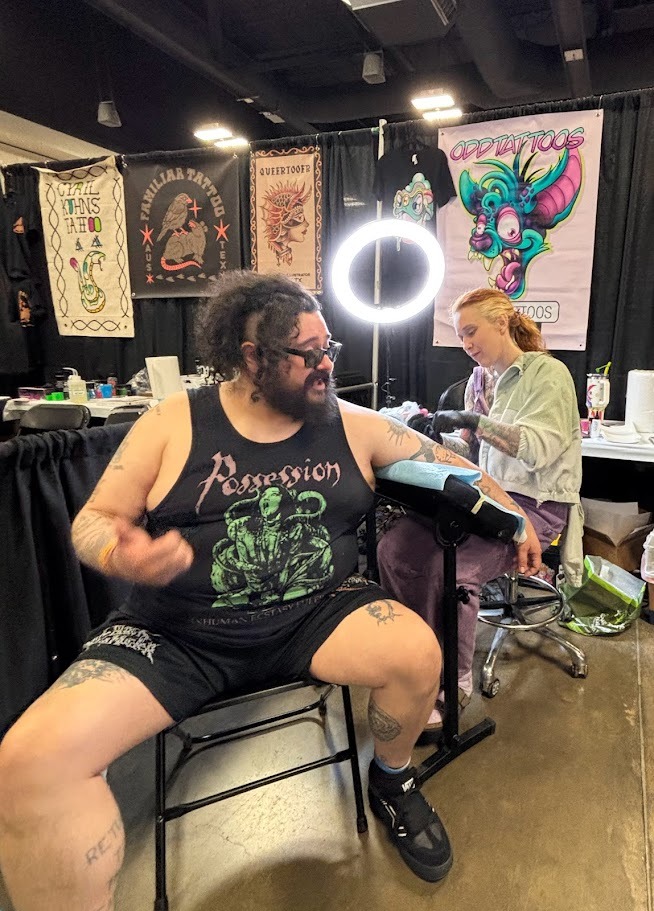22nd Annual Star of Texas Tattoo Art Revival hosts hundreds of artists from around the country
By John Melendez

Above the low buzz of his tattoo gun and the soft roar of the convention crowd at the Palmer Events Center in Austin, Texas, Ohio-born tattoo artist and recent transplant, Taylor Roy, 33, attributed his decade-long career to the serendipity of God.
“I fell into the right place at the right time,” Roy said. “I was getting in a bunch of trouble and shit when I was younger. And then I just happened to be at this shop and made friends with the guys there. And I happened to be there the day their apprentice got fired.”
Roy, who has worked in South Florida, New Jersey and more recently, Nashville, Tennessee, reflected on his career trajectory while tattooing an attendee’s thigh at the 22nd annual Star of Texas Tattoo Art Revival on Feb. 2.
“You know how when people are kids and they talk about, ‘Oh, I dreamed of being a firefighter or a policeman or something like that?’” Roy said. “I never had any of those dreams, man. I didn't want to have a normal job. So now that I have this one, I couldn't imagine doing anything else.”

Since the Star of Texas Tattoo Art Revival was first held in a small hotel ballroom in 2002, the convention, along with Austin’s tattoo scene, has inevitably evolved. This year, the event hosted about 340 artists from around the U.S. with 4,000 attendees during the weekend-long event from Jan. 31 to Feb. 2.
Roy, like many others, has experienced the changing attitudes toward tattoos firsthand.
“Ten years ago, if you had your face tattooed, that was a big fucking deal.” he said. “I had taken a girl to this nice restaurant and they wouldn't let us eat there because I had face tattoos. But it's definitely super accepted now. I mean, for crying out loud, it's on TV all the time, you know?”
The shifting attitudes toward tattoos in recent decades were explored in a Pew Research Center survey of U.S. adults in 2023. It found that 80% of Americans say society has become more accepting of people with tattoos over the past 20 years. In fact, about one-third of adults have a tattoo themselves, with 22% having more than one.
When Marcy Molkenthen, 62, promoter and founder of the Star of Texas Tattoo Art Revival, arrived in Austin as a screen-printer from Southern California in 1994, her tattooed arm sleeves were a lot less conventional and the city’s tattoo community was a lot smaller.
Molkenthen said the scarcer national tattoo conventions she attended throughout the ‘90’s gave her ideas about organizing a better kind of convention that catered to the needs of artists while still creating a friendly, feel-good atmosphere.
“That was the idea about the revival…getting like-minded art spirits together,” Molkenthen said. “It's kind of hippie-dippie, which suits Austin, but there is something special when you have 300-plus people all in a room creating at the same time.”
While people still walk into shops or conventions and buy flash designs that are readily available, tattoo artistry has become a lot more tailored to individuals than when Molkenthen first entered the scene.
“Now that people know more and know that it can be much more personal, more often than not, somebody is going to make an appointment, actually have a consultation,” she said. “I think that's a good thing. I think you get better tattoos overall.”
According to the Pew survey, among U.S. adults with tattoos, 69% say that honoring someone or something is at least a minor reason for any of their tattoos. Nearly half of those surveyed said they got a tattoo to make a statement about what they believe and about one-third said they got at least one tattoo to improve their personal appearance.
Erica Padilla, 29, had never attended the tattoo convention before. She and her boyfriend drove from Killeen, Texas, so that he could get his sleeve finished. By the end of it, she’d walked out with her first tattoo - two fine-line violets - the birth month flowers she and her daughter share.

“My family is kind of like, they don't really like tattoos, so I've always kind of grown up not to get any,” Padilla said. “But now, I'm older, moved out of my home, and I like art a lot. I think that's what kind of strayed me away from getting one for so long, just because I wanted to make sure it was meaningful.”
Over the last 20 years, Austin’s evolution into a growing tech hub and Texas tourist city has also broadened the variety of tattoo styles that are easily accessible.
But the increased diversity hasn’t only come in the types of designs either.
Tattoo artist Chanel Emery, 32, attended the convention as part of Golden Days Tattoo based in San Diego. Although she’s tattooed professionally for six years, her love for the artform began when her mother took her to a tattoo convention around the age of 7. Emery says the biggest change she’s witnessed over the last two decades is the widened inclusivity of the tattoo community.
“When I was young, I think maybe there was one female tattooer that I would see at a given convention,” Emery said. “Now, it feels a lot more even, even if it's not totally 50-50. I see a lot more women. I see a lot more queer people at these things.”
38% percent of women have at least one tattoo compared to 27% of men. About half of lesbian, gay or bisexual Americans have at least one tattoo compared to 31% of straight Americans, according to the Pew survey.
Emery said the unpredictable financial lifestyle that comes with the job is worth the genuine interactions she wasn’t finding in the corporate and fine art worlds she worked in before.
“A lot of the time, people are coming to you in moments of vulnerability,” she said. “I always joke around that the tattoo is free, that you pay for the therapy. And I really appreciate those types of connections versus the shallow, just make money and leave, kind of lifestyle.”

Post a comment